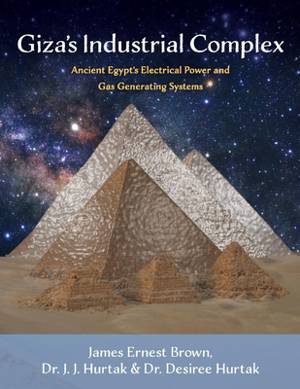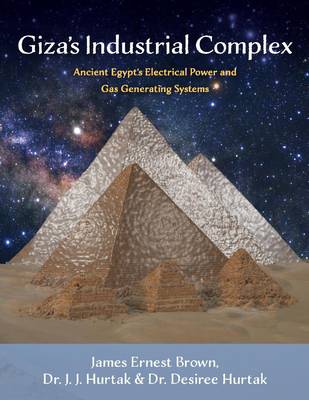
- Afhalen na 1 uur in een winkel met voorraad
- Gratis thuislevering in België vanaf € 30
- Ruim aanbod met 7 miljoen producten
- Afhalen na 1 uur in een winkel met voorraad
- Gratis thuislevering in België vanaf € 30
- Ruim aanbod met 7 miljoen producten
Zoeken
Giza's Industrial Complex
Ancient Egypt's Electrical Power and Gas Generating Systems Volume 1
James Ernest Brown, Hurtak
Paperback | Engels
€ 49,95
+ 99 punten
Omschrijving
Although pyramids are similar in design, many may have had different or dual functions. The authors propose that ancient Egypt developed and controlled an elaborate power system that was centered around Giza and as far south as Abydos. They believe that the underground structures, channels, and cavities that surround ancient Pyramid structures were part of an immense industrial complex, including gigantic earth batteries. The authors believe evidence indicates that the Great Pyramid on the Giza Plateau had the ability to electrically charge, or change the molecular structure of water, giving it unique properties. We believe the ancient Egyptians created a fourth form of electrically-charged water, giving it unique properties. James Ernest Brown calls this "Earthmilk Ancient Energy." All pyramids were connected to the Nile River, and there is physical evidence that water from the Nile River circulated through their passageways and chambers by way of man-made channels both above and under the ground.
Specificaties
Betrokkenen
- Auteur(s):
- Uitgeverij:
Inhoud
- Aantal bladzijden:
- 150
- Taal:
- Engels
Eigenschappen
- Productcode (EAN):
- 9781543962994
- Verschijningsdatum:
- 15/03/2019
- Uitvoering:
- Paperback
- Formaat:
- Trade paperback (VS)
- Afmetingen:
- 213 mm x 277 mm
- Gewicht:
- 544 g

Alleen bij Standaard Boekhandel
+ 99 punten op je klantenkaart van Standaard Boekhandel
Beoordelingen
We publiceren alleen reviews die voldoen aan de voorwaarden voor reviews. Bekijk onze voorwaarden voor reviews.








